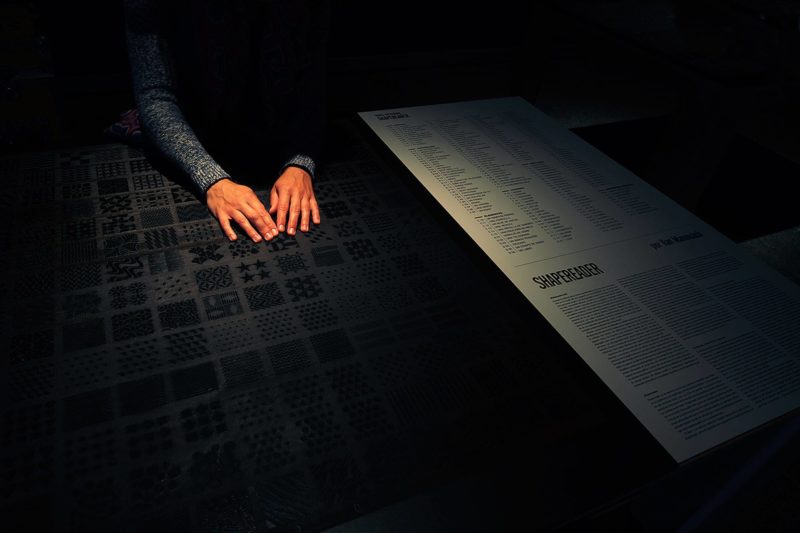11 Dec 2017
Interview
THE TRUTH ABOUT LANGUAGE: ILAN MANOUACH’S SHAPEREADER

Photo: Imagen MAS
I arrived at Photographic Gallery Hippolyte on a rainy and grey Saturday afternoon. I didn’t know much about what was coming, apart from the fact that I was to participate in a sensory workshop about language and stories. I knew that artist Ilan Manouach has a background in comics, and I knew that he had received a grant from Kone Foundation to develop his own sensory and linguistic experience through art and storytelling.
As soon as I arrived at the gallery, the participants to the workshop were divided into two groups and led into a dark room. The fact that I was slightly late for the workshop, added to my feeling of unease, together with the fact that I genuinely do not believe that I function well without my eyesight to rely on. Ilan then told us the premise of the exercise: we were to create a new language within our group, and then use the language to tell a story.
The workshop is based on Shapereader, a language-building system Ilan has been working on since 2013. The Shapereader-workshop is an opportunity for visually impaired participants to work together with the visually able, in order to create a unique, disappearing, haptic language. The language took the shape, literally, of hundreds of little flat blocks with engraved shapes on them. These shapely blocks, or communication blocks, form the basis of the language; the words, the meanings, the letters, whatever the group would want them to be.
I can see so much potential in these little blocks. Ilan told us that he has been using over 5000 different communication blocks, and almost as many shapes. In my group of three people, we struggled to live up to the potential of the communication blocks. Our sensory skills were not great. Our communications skills, although better, were not terrific either. How do you build a language, when you cannot decide on what you want to say? This was a major challenge, and a somewhat surprising one, also.
Interestingly enough, the group ended up discussing language, rather than stories. Even though the story should have come first. I believe that was our main fault: we focused too much on the symbols, too much on the means to communicate, rather than what we wanted to communicate.
I had originally thought that the main challenge would be assigning meanings to the communication blocks. Instead, that was the easy part. What is language made up of? Letters, words, stories. Also, emotion: you tell a story, and it is delivered differently depending on the genre. These were the questions we were asked to solve; how do you assign meaning to a block in order to show that the story you are telling is making you anxious? How do you create a language, when you don’t know what you are trying to express? What comes first, the language or the story? The signifier or the signified?
In the end, we did come up with a story, as well as a language to tell it. In our dystopic future sci-fi fantasy, the world was coming to an end and humans tried to flee it on a spaceship (the stories I come up with seem to follow this pattern!). What I feel I was given, was a chance to reflect on why we need language. All my life I feel I have been preoccupied with arranging my storytelling blocks (or parts of the story) in different ways to create different meanings and different stories. In a way, the story itself has always come second to the linguistic material I have been using. Ilan gave me (and many others, I presume) the means to reflect more on the necessity of language in order to express some already existing dialogue.
READ MORE:
http://hippolyte.fi/nayttely/ilan-manouach-shapereader-2/?lang=en
